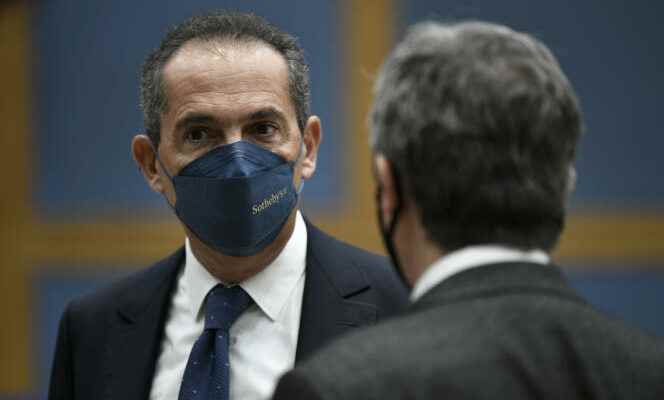A battalion of tax experts, a possibly backdated contract and front companies in the Caribbean. These are the ingredients of the operation which allowed Patrick Drahi to avoid paying a single euro in tax on the sale of his immense collection of works of art, estimated at at least 750 million euros. Aggressive tax optimization, at the limits of legality, according to the survey of the World and the Swiss magazine Heidi.news.
The emails, sales contracts, internal memos and spreadsheets that help piece together this story are among the many confidential documents stolen by cybercriminal group Hive in a hack targeting Patrick Drahi’s holding company, Altice, and published online in August, after an unfulfilled ransom demand. The world chose to exploit these data despite their criminal origin because of their public interest. These documents, already mentioned by the site Reflets.infoindeed reveal from the media and telecom magnate – eleventh fortune of France according to the magazine Challenges and owner of BFM-TV and SFR – tax practices that raise questions with regard to European regulations.
The story begins at 5, rue Eugène-Ruppert, in Luxembourg City. It is in this small, soulless business center that the financial heart of the Drahi Empire is located. At the same address, there are dozens of mailboxes: on one side, the holding companies of the Altice group (media, telecoms); on the other, the companies carrying the private investments of its founder, Patrick Drahi. One of them, called “Before SA”, held until recently a portfolio of more than 200 works of art to make the most prestigious museums green with envy: five Picassos, eleven Magrittes, eight Chagalls, a Modigliani, a triptych by Bacon, two sculptures by Rodin and as many by Giacometti…
The “LuxLeaks” are a game-changer
Luckily, the pieces of this treasure were not exhibited on the walls of 5, rue Eugène-Ruppert, recently affected by water damage: they were stored in a safe place, in private homes, in the free port of Geneva. or in the warehouses of the Sotheby’s auction house, bought by Mr. Drahi in 2019. By holding his collection through a Luxembourg company, the billionaire, a Swiss resident, benefited from a favorable tax regime, allowing him to hope not to pay any tax on the capital gains the day he would sell part of it, to a buyer or to his children.
However, this hope was dimmed when the European Union (EU) adopted the “ATAD 2” directive in 2017. This text, born after the “LuxLeaks” scandal, aims to drastically limit the possibilities of tax optimization offered by European tax havens such as Luxembourg or the Netherlands. Concretely, it limits the use of certain tax deduction devices, and in particular the “CPEC”, hybrid financial instruments widely used within the Drahi empire. As is often the case, the authorities gave financial players time to adapt: the reform only came into full effect on 1er January 2022. More than enough time to find a fallback solution.
You have 62.55% of this article left to read. The following is for subscribers only.
